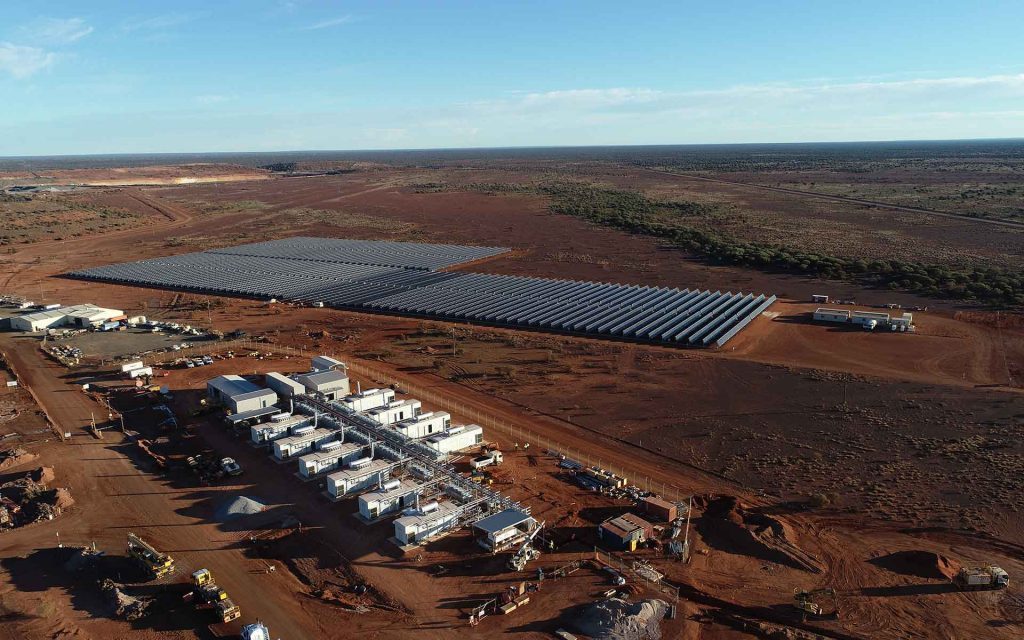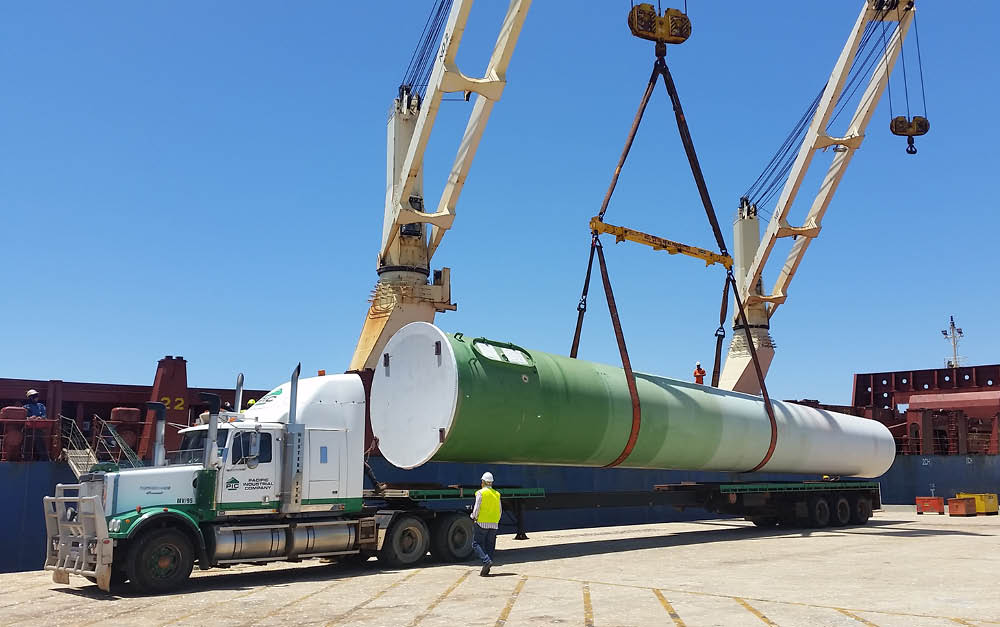Fringe of grid mines embrace renewables
Two remote Western Australian mines are switching to wind, solar and battery power in a bid to improve reliability while also cutting costs and emissions.

Gold Fields’ Agnew gold mine is already busy constructing the wind, solar, battery and gas hybrid facility at their site 1000 kilometres north east of Perth, which has received $13.5 million in funding from ARENA.
The hybrid microgrid will consist of an 18 MW wind farm with five wind turbines, a 4 MW solar farm with 10,000 panels and a 13 MW / 4 MWh hour battery underpinned by a gas power station.
Meanwhile, Perth-based renewable energy developer Advanced Energy Resources are building a $11.2 million wind, solar and battery at picturesque Port Gregory, situated 100 kilometres north of Geraldton on the Indian Ocean.
This project, supported by $3 million from ARENA, will help to power the nearby GMA garnet mining and processing operation providing up to 70 per cent of GMA’s electricity needs.
The project will be the first in Australia to use second-hand wind turbines which started their life in Germany. It is due to be commissioned in December.
The project also uses a novel approach to connecting wind and solar to the grid, overcoming the challenges of a weak, fringe of grid location through a design that decouples the wind, solar and battery from the grid via a DC link.
Both projects were announced at the Energy and Mines Conference in Perth, where ARENA CEO Darren Miller gave a keynote address that highlighted the long term opportunities for the mining sector to switch to renewable energy.
As the mining sector produces 21 times more energy than Australia’s electricity sector, and consumes four times more energy than the whole of the domestic economy, switching to renewable alternatives could have a big impact in the future.
Darren Miller says that the projects will blaze a clean energy trail for other mines in remote locations by demonstrating how renewable energy can reliably provide the majority of the electricity required to power critical mining loads.
“Fringe-of-grid communities in mid-west Western Australia suffer from network outages, so this is a great step forward in creating a template for other electricity users in similar conditions, to replicate and reduce electricity costs and improve reliability and stability,” he said.
The Gold Fields microgrid is expected to provide 55 to 60 per cent of the mine’s total energy requirements, with the potential to meet almost the entirety at certain times. To maximise the use of renewables, Gold Fields will adopt dynamic load shedding, forecasting of renewable generation and load management.

Distributed energy specialists EDL will design, construct, own and operate the microgrid in two stages. The first is due to be completed in mid 2019, installing solar panels to operate alongside the gas and diesel generators. Phase two will roll out the wind turbines, battery and microgrid and is expected to be completed in 2020.
EDL CEO James Harman said the company has seen momentum building for hybrid energy systems, particularly in remote off-grid locations.
“EDL is pleased to be an active contributor to Australia’s transition to sustainable energy,” Mr Harman said.
“Our strong base of knowledge and experience from our successful hybrid renewable projects will enable us to provide Agnew Gold Mine with greater than 50 per cent renewable energy over the long term, without compromising power quality or reliability,” he said.
Once finished, it will be the first Australian large scale mine to be powered by wind generation.
Almost 700 kilometres due west of Agnew is the town of Port Gregory, situated on a spit of land between the Pink Lake and Indian Ocean.
Here, AER is also developing a hybrid system of different renewable technologies to provide power to the adjacent garnet mine.
The system will pair 2.5 MW of second-hand wind turbines with a 1 MW solar farm and 2 MW / 0.5 MWh battery to provide a dependable supply of energy, in a location where reliability of supply cannot be taken for granted.
Situated 120 kilometres from the nearest substation at the end of a transmission line, at the very end of the grid, not only is the existing transmission infrastructure highly constrained, it is prone to frequent outages.

AER Managing Director Luca Castelli said that their innovative approach will commercialise projects that have previously been deemed unfeasible for technical or commercial reasons.
“With ARENA’s support, AER will showcase an innovative way of delivering low cost, reliable renewable energy to large energy users in fringe of grid areas in a project that delivers several Australian-first ideas,” Luca Castelli said.
He added that by thinking outside the box, the project “will change the way that renewable energy generators are delivered in weak, fringe of grid areas and by customers who are unable to commit to long term power purchase agreements.”
The Port Gregory project is more than a dozen years in the making, after AER first identified this high potential renewable energy site. AER signed a power purchase agreement with GMA back in 2017, but then had to scope the project to overcome the technical challenges of connecting to the grid.
ARENA CEO Darren Miller pointed out that while repurposing used wind turbines is new in Australia, it is common overseas.
“In Europe, there is a significant market for refurbished wind turbines, as wind farms increase their capacity by upgrading smaller turbines for larger, more powerful ones. Now, AER has brought experience from the European market to enable them to give these turbines a second life in Western Australia.”
LIKE THIS STORY? SIGN UP TO OUR NEWSLETTER

ARENA